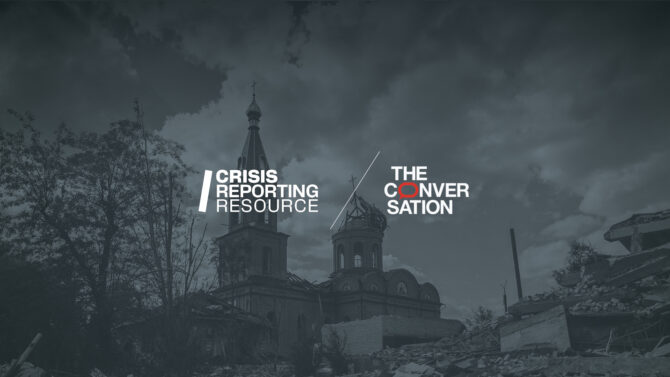In late February 2024, the autonomous, unrecognized state of Transnistria, situated on the border between Ukraine and Moldova, pleaded for Kremlin support in light of mounting economic pressures from the Moldovan government in Chisinau. In the opening piece of the series “The 10 Crises of 2024 – Explained,” we delve into what is the current status of this diminutive region, which seceded from Soviet Moldova in 1990. Why is it of geopolitical importance, and what are the odds it might instigate Russia’s next military conflict?
Where is Transnistria situated?
Transnistria, located on the eastern bank of the Dniester River, is a strip of land that spans approximately 4.000 square kilometers along the border between Ukraine and Moldova. With a population of 465.000, its residents primarily speak Russian, alongside Ukrainian and Romanian.
The Russia-Ukraine War has caused a staggering amount of cultural destruction – both seen and unseen

Russia’s full-scale invasion of Ukraine destroyed part of the Ukrainian history and heritage. The Russian military has deliberately targeted important museums, churches, and libraries.
What is the historical background of the region?
“Transnistria is an area characterised by its diverse population, having experienced numerous changes in governance over time,” describes Professor Vemund Aarbakke of the Department of Political Sciences at the Aristotle University of Thessaloniki in his discussion with iMEdD. In 1990, Transnistria seceded from Moldova. Its populace, predominantly comprised of ethnic Russians, opposed Moldova’s potential unification with Romania, fearing estrangement from Moscow. Although the union never materialised, a brief conflict erupted in 1992. Pro-Russian separatists in Transnistria, aided by Russian forces, emerged victorious over Moldovan troops, leading to the signing of a ceasefire that year and the establishment of a demilitarized security zone within the region.
What is the current political landscape?
Approximately 1.500 Russian soldiers are presently deployed in Transnistria. The de facto administration of Transnistria boasts its own currency, constitution, national anthem, and flag, featuring the Soviet-era symbol of the hammer and sickle. The streets of its capital, Tiraspol, are adorned with statues of Lenin and other relics of the Soviet era, making the city resemble a museum dedicated to Soviet history.
Why is Transnistria geopolitically significant?
Transnistria holds geopolitical importance primarily due to Russia’s substantial economic and political sway in the region. The Kremlin asserts that around 200.000 Russian citizens reside in breakaway Transnistria. Meanwhile, Moldova is actively pursuing a resolution to the Transnistrian issue, driven by its aspirations for European Union membership. It’s worth noting that Transnistria lacks international recognition and is officially regarded as part of Moldova. In February 2022, amid Russia’s invasion of Ukraine, the Ukrainian government closed its border with Transnistria. This move was prompted by concerns of a potential Russian military incursion from the region, which lies a mere 70 kilometers from the strategically vital city of Odessa. “There are rumors suggesting Russia’s interest in establishing a corridor through Ukrainian territory to connect with Transnistria, but developments within Ukraine take precedence. Such a scenario would only be feasible if Russia gains control of Odessa first,” Professor Aarbakke adds.
There are rumors suggesting Russia’s interest in establishing a corridor through Ukrainian territory to connect with Transnistria
Vemund Aarbakke, Professor, Department of Political Sciences at the Aristotle University of Thessaloniki
Is it the next war of Russia?
An analysis by the Institute for the Study of War, published in February 2024, suggests that the Kremlin’s activities in Moldova mirror those conducted in Ukraine before the conflict erupted in 2014 and the subsequent invasion in 2022. The analysis warns that Russia is laying the groundwork for a potential hybrid operation in Moldova, with Transnistria at its focal point, indicating that such an eventuality could occur imminently. On February 14, Russian Foreign Minister Sergei Lavrov expressed his “concern about the fate of Russian citizens in Transnistria.” Two weeks later, the autonomous state appealed to Moscow for assistance. “I do not perceive Transnistria as the primary catalyst for a new conflict, but depending on broader regional developments, there is a possibility of adverse consequences unfolding there as well,” remarks Professor Aarbakke.
